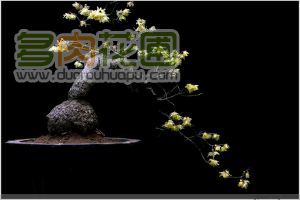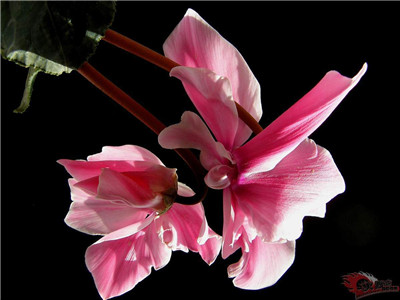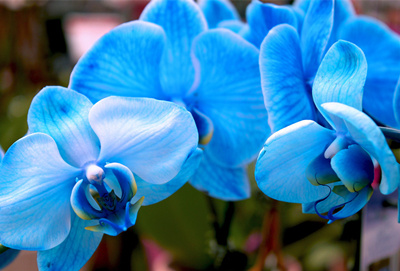How about potted plum blossoms?
The plum blossom blossoms in the cold winter months, that is, from December to March of the following year. Its flower colors are mainly red, yellow and white, with a solid aroma. Lamei bonsai is usually cultivated outdoors and indoors, thanks to the tenacious survival ability of Lamei blossoms.
Water and Fertilizer Management of how to raise Plum Blossom
There is a common saying about the plum blossom, called "the wax plum blossom that cannot die in drought", which fully shows that the drought tolerance of the wax plum blossom is very strong, so the potted landscape of wax plum is insensitive to the need for water. In spring and autumn, if the basin soil is not dry, it will not be watered, and once in the morning and evening in summer. During the flowering period of the plum blossom, it should not be watered too often, otherwise it will cause the wax plum to fall.
Wax plum blossoms like fertilizer, but not too thick. The time of fertilization is from April to November, liquid fertilizer is applied once a month, and fertilization can be increased in late June to make nutritional preparations for flower bud differentiation.
The shaping and pruning of Prunus mume blossoms
If you want to ensure the bonsai of preserved plum-a good ornamental, you need to prune the branches. The pruning method of preserved plum bonsai depends on the shape of the tree decided in advance. Taking the pruning method of Arbor-shaped tree as an example, the stout branches were selected in the young seedling stage, and the trunk was cultivated. After the trunk grew to the desired height, the tree crown was formed by the treatment of the reserved dry branch, basic branch or side branch.
Pest Management of how to raise Prunus mume Blossom
There are few diseases and insect pests in Prunus mume blossom. If encountered, the branches affected by insect pests can be cut off and burned during the dormant period of Lamei blossom.
After enjoying so many pictures of wax plum blossoms, I also learned the knowledge of how to raise wax plum blossoms. I will start planting now, and I will be able to see the bonsai in full bloom next winter.

Pot-up process
Select basin: plum blossom should use purple sand pottery basin or glazed pottery basin, generally not too shallow, oblique dry type, curved dry type are mostly used for medium-deep manger basin or round basin, square basin, hexagonal basin, etc.; cliff type is mostly used for thousand-cylinder basin.
Use soil: plum blossom is not strict on soil, but it is better to use loose, permeable and humus-rich soil. The frozen crisp pond soil mixed with 30% bran ash is commonly used as culture soil.
Planting: it should be carried out from November to December, or after flowering. It is generally appropriate to plant in an oblique way, which is easy to take advantage of when modeling. A plastic trim can be carried out before planting. The base fertilizer can be placed at the bottom of the basin.
Pose shaping technique
Processing: the shape of plum blossom is mostly "rough rolling and fine shearing". The trunk can be clamped up to 1 cm in diameter, and the side branches can also be roughed, with brown wire and metal wire, and the rest are trimmed. For the newly born flower branches every year, according to the modeling needs, you can also use brown silk to climb. The processing of trunk and big branches should be in winter, while the processing of new branches should be in autumn and September. Be careful not to hurt the buds.
Tree shape: generally speaking, the trunk of plum blossom bonsai in China should be oblique and horizontal, and the branches and leaves should be stretched, but it is not blindly sparse. There are many traditional plum blossom bonsai styles in various schools of our country, and the common ones are as follows:
Wandering dragon style
It is the traditional style of Hui style bonsai, that is, the trunk is S-shaped from the base to the top, like a swimming dragon, and the lateral branches all come from the convex bend of the trunk, which is also bent to a certain extent, symmetrical, up and down on the same plane, which is very interesting.
Three-stage type
It is also a traditional style of Huizhou style, the trunk is made of 2-3 bends, and the upper branches and leaves are divided into three pieces, high and low, with distinct levels, each in the shape of horizontal steamed bread, dignified and stable.
Split dry type
In the traditional style of Su-style bonsai, the thick and unformed Meizhuang is split, part of the xylem is removed and carved to achieve the effect of "dead wood in spring".
Pimple type
The traditional style of sending bonsai for Yang is to tie a knot or circle the trunk in the young stage of the plum, which will form a pimple over time, which is strange and ancient.
Downwind type
It is also a traditional style of the Yang School, in which all the flower branches of the plum are tied to the same side, like the effect of the wind blowing the flag.
Drooping branch type
It is also a traditional style of the Yang School, that is, all the side branches of the plum blossom are tied into a drooping shape with a unique grace.
The above style is for reference only, now the shape of the plum blossom bonsai is more of the plum blossom climbing and pruning, making a natural feeling of not sticking to one style.
The method of making Prunus mume Bonsai how to raise the potted scenery of Lamei Blossom
Wax plum blossoms in the depths of winter with withered flowers, fighting cold and proud frost, showing the character that the Chinese nation will never yield in the face of rape, giving people spiritual enlightenment and the enjoyment of beauty. This integrity of dried plum also makes it favored by many flower lovers. Lamei bonsai has high artistic and ornamental value. This article introduces the production process of Lamei bonsai in detail.
Material selection and cultivation
The old root pile of wild Chimonanthus praecox in mountainous area is cultivated in the ground, and the ancient pile of Chimonanthus praecox is made, which is more common and has a quick effect. The method is to select the old stump that has been cut down for many years, and after digging it back, pay attention to protecting the root system and pruning the branches. Choose the place with moderate light, loose soil and good drainage to "raise the embryo", and then move it to the basin after survival. If it is an old pile of dog flies and plums, it can be grafted with plain heart wintersweet, and it can be processed and modeled as needed after survival.
Pot-up process
1, selection basin: wax plum should use purple sand pottery basin, can also use glazed pottery basin. General seedlings Chimonanthus chinensis mostly use round basin, square basin, hexagonal basin and so on. Wintersweet old pile can use medium-deep dregs basin or crabapple basin, cliff type more choose thousand-cylinder basin. Dark purple or ochre red is better in color to set off waxy yellow flowers and increase their ornamental effect.
2. Using soil: Chimonanthus praecox is not strict on soil, but it is better to use sandy loam with good drainage. The commonly used mature pastoral soil or rotten leaf soil mixed with 20% bran ash was used as culture soil.
3. Planting: the transplanting of Chimonanthus praecox is mostly carried out in the early spring, and it is suitable before and after the new bud germination of the flower stem in early March. It is generally appropriate to plant in an oblique way, which is easy to take advantage of when modeling. A plastic trim can be carried out before planting. Sufficient base fertilizer can be applied to the bottom of the basin when it is put on.
Pose modeling
The styling and styling of Chimonanthus is mainly pruning and budding, supplemented by climbing. Xiyaojia Village, Yanling County, Henan Province is known as "Yiling Wax Plum Crown in the World". Its traditional plastic arts include "screen fan plum", "pimple plum", "hanging branch plum" and so on, especially the screen fan plum is the most popular. its modeling process: during the period of March to April, the main branch is twisted and spirally raised by "hob method" and "dragon knife method". When the bud is just sprouting, it is cut obliquely at the place to be bent, and the knife edge is oblique, reaching the diameter of the branch 2B3. Bend carefully so that the upper part of the cracked xylem is supported on the lower section, use a pole to support the newly bent trunk, and tie it up with a rope. And then make all the top tips of the branches downward. The incision should be coated with mud within 1 month, and can not be removed, and should be filled up as it falls. After the formation of the basic skeleton, we should pay attention to pruning and pick the heart in time to maintain the shape of the screen fan.
Although Chimonanthus and Plum blossom do not belong to the same family, but their florescence is similar, and their flowers and aroma are also similar. Wax plum is fragrant and fragrant, and does not reduce red plum, so we can learn from the modeling principles of plum blossoms: "Mei takes qu as beauty, straight as beauty, straight as beauty, regular without scenery, sparse as beauty, dense and stateless", "plum is rare but not expensive and complex, expensive old is not expensive and tender, expensive thin is not expensive fat, Guihe is not expensive to open" and so on. Therefore, the trunk should be oblique and horizontal, the branches and leaves should be sparse, and the pile is old and vigorous. In addition to the "screen fan type", "pimple type" and "hanging branch type" of Yiling, Henan Province, there are also "downwind type", "hanging branch type", "swimming dragon type" and so on.
Well, the above is the whole process of making preserved plum bonsai. Interested friends can try to make a potted preserved plum bonsai.
- Prev

How to maintain cyclamen in spring
Cyclamen flowers blooming in winter and spring, the proper maintenance methods of cyclamen in spring will prolong their flowering period, bright colors and improve their ornamental value. Therefore, in spring, the maintenance of cyclamen is very important. Cyclamen is like light flowers, winter and spring is the blooming period of exuberant flowers, in order to make the buds flourish.
- Next

What are the key points of Phalaenopsis winter management
Because Phalaenopsis is native to the tropics, it is not resistant to severe cold. When the temperature is too low in winter, if it is not cultivated properly, necrotic black spots will appear on the leaves, and then fall off, resulting in the death of the whole plant. The north needs to be cultivated in high temperature greenhouse in winter, so we specially introduce the key points of its winter management.
Related
- Fuxing push coffee new agricultural production and marketing class: lack of small-scale processing plants
- Jujube rice field leisure farm deep ploughing Yilan for five years to create a space for organic food and play
- Nongyu Farm-A trial of organic papaya for brave women with advanced technology
- Four points for attention in the prevention and control of diseases and insect pests of edible fungi
- How to add nutrient solution to Edible Fungi
- Is there any good way to control edible fungus mites?
- Open Inoculation Technology of Edible Fungi
- Is there any clever way to use fertilizer for edible fungus in winter?
- What agents are used to kill the pathogens of edible fungi in the mushroom shed?
- Rapid drying of Edible Fungi

